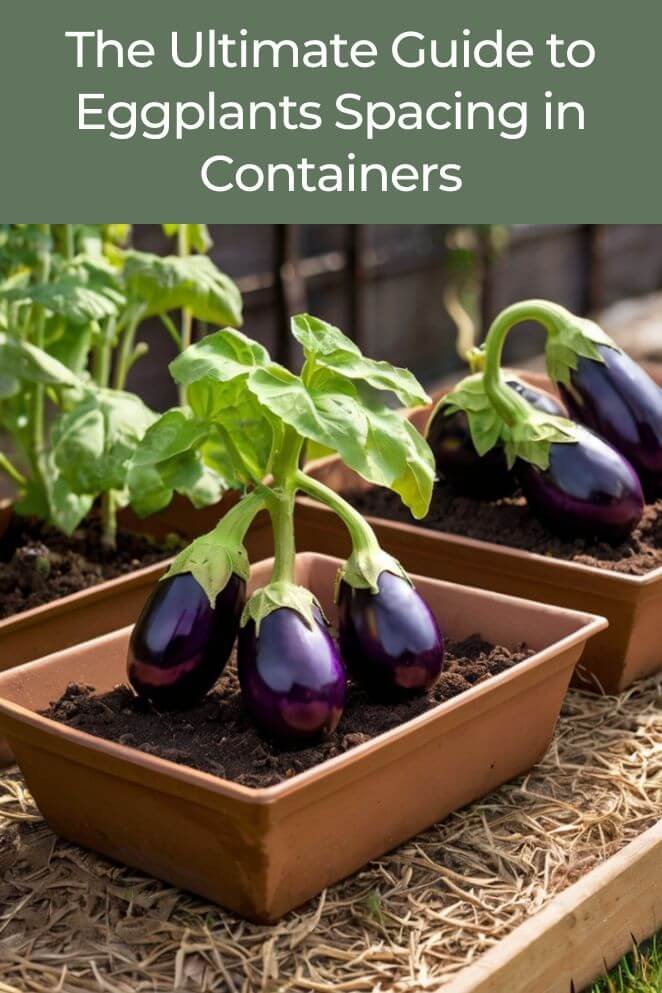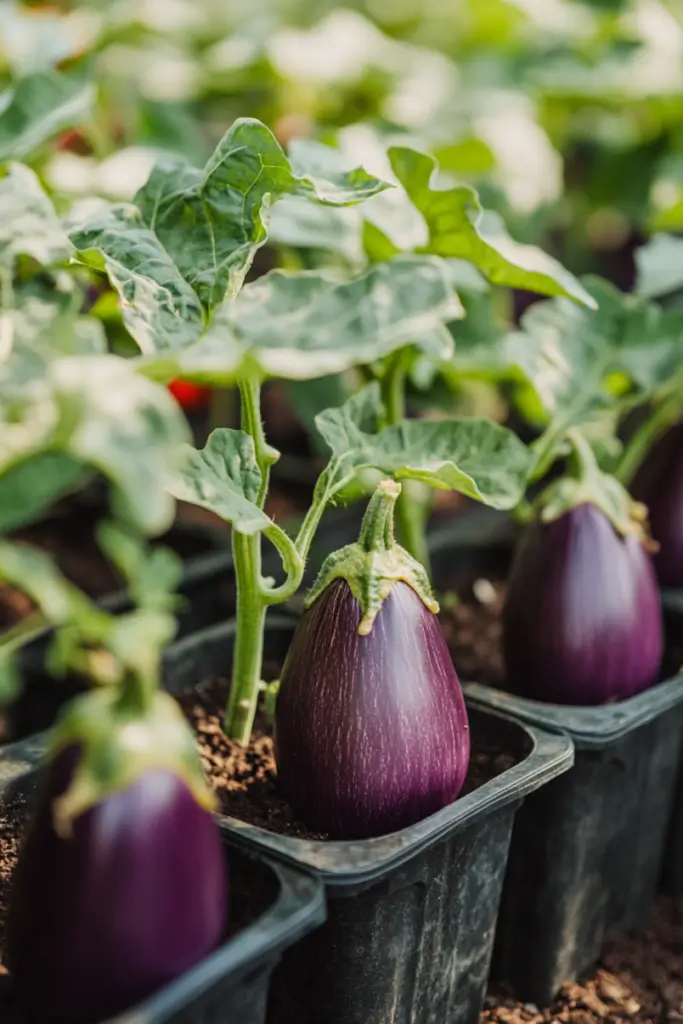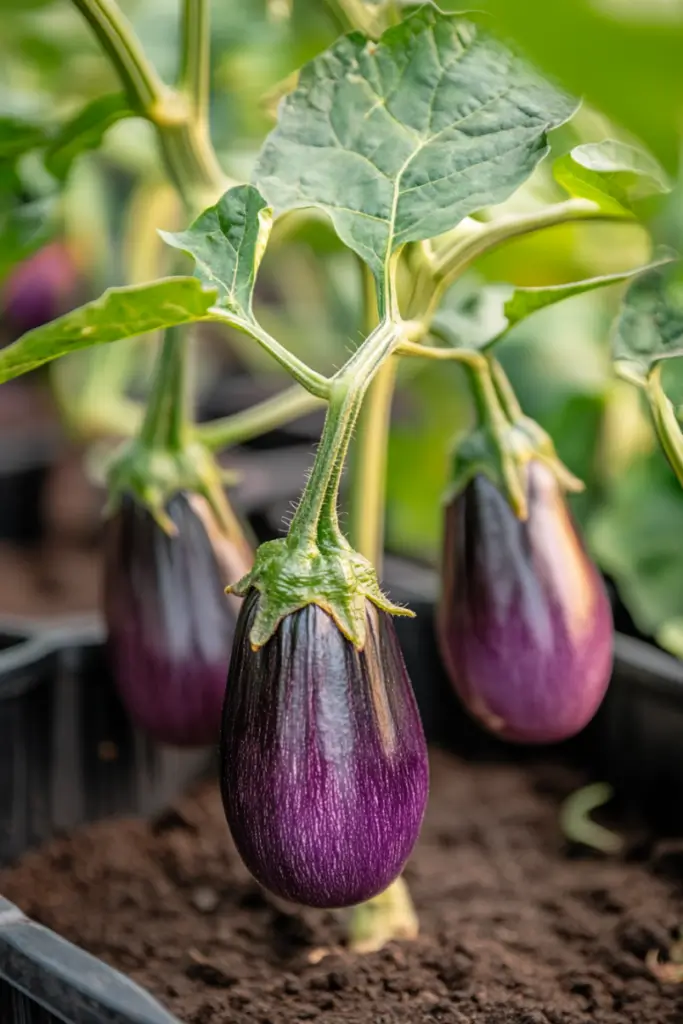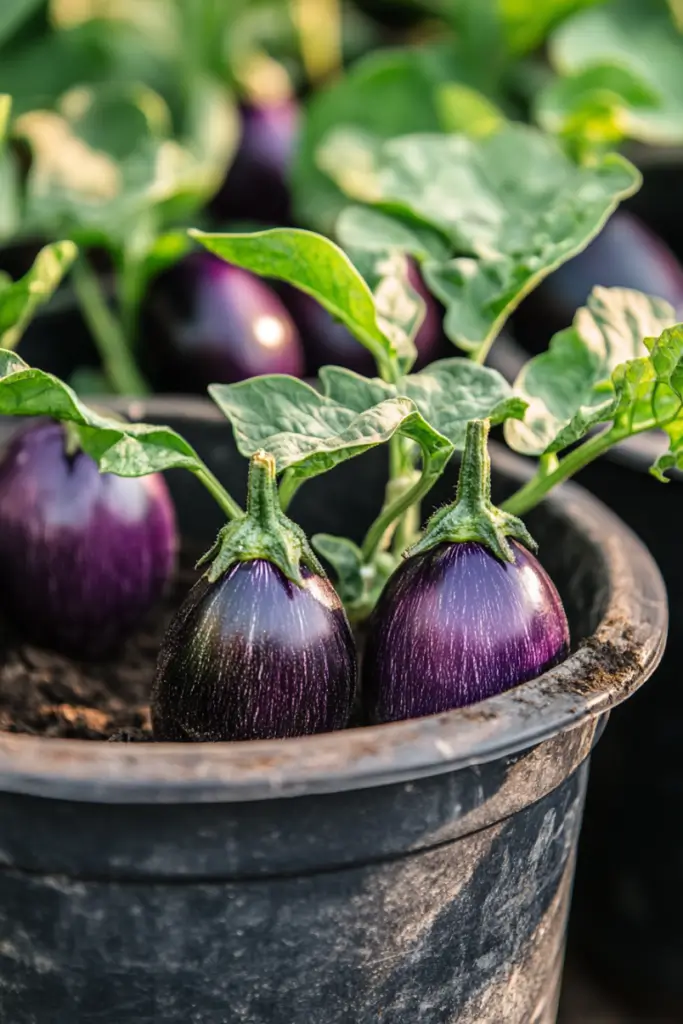
Growing eggplants in containers is a great way to enjoy fresh produce even if you’re short on garden space.
However, spacing is key to ensuring your eggplants thrive, producing high yields without overcrowding or stunted growth.
Whether you’re using a small balcony or a spacious patio, getting the spacing right will help you grow healthy, vibrant eggplants.
In this article, we’ll cover everything you need to know about eggplant spacing in containers, including factors to consider, general guidelines, and tips for maximizing space efficiency.
Factors to Consider for Eggplant Spacing
Before deciding on the spacing for your eggplants, several factors must be taken into account:
Container size and shape
The size and shape of your container play a big role in how well your eggplants will grow.
If you’re using a small container, the limited root space can restrict plant growth.
A larger container provides more room for roots to spread out, which helps the plant grow taller and produce more fruit.
Remember, both the depth and width of the container are important.
- Read also: Save Your Eggplant! Tips on Dealing With Whiteflies on Eggplant
- Read also: Beat the Blight: Identifying Fungal Diseases of Eggplant
Eggplant variety and growth habit
Different types of eggplants have different growth patterns.
For example, Italian eggplants can grow quite large, while Thai or Japanese varieties tend to be smaller and more compact.
Knowing the growth habit of the variety you’re planting helps you determine the right spacing.
This ensures that each plant has enough room to grow properly, allowing for good air circulation and root development.
Desired yield
How much you want to harvest also affects how far apart you should space your plants.
If you’re aiming for a large harvest, each plant will need more space to get enough light and nutrients.
If you’re growing eggplants for a smaller, casual harvest, you can plant them a bit closer together.

General Spacing Guidelines
When gardening with containers, how far apart you space your eggplants depends largely on the size of the container.
Here’s a simple guide to help you determine the right spacing based on container size:
Spacing for small containers
For smaller containers, you should plant just one eggplant per container.
These pots, usually between 5 and 7 gallons, are only large enough to support a single plant.
Ensure the container is at least 12 inches deep to give the roots enough room to grow.
- Spacing: One eggplant per container.
- Container size: 5-7 gallons minimum.
Spacing for medium containers
Medium-sized containers are suitable for growing more than one eggplant.
In a 10-20 gallon container, you can plant 2-3 eggplants if they are spaced properly.
Aim to leave about 18-24 inches between each plant to ensure they have enough room to grow.
- Spacing: 18-24 inches between plants.
- Container size: 10-20 gallons.
Spacing for large containers
With larger containers or raised beds, which are 20 gallons or more, you can plant several eggplants comfortably.
These larger spaces can support up to four plants. Make sure to space them about 24-36 inches apart to allow each plant ample space to thrive.
- Spacing: 24-36 inches between plants.
- Container size: 20+ gallons.

Specific Spacing Recommendations for Popular Eggplant Varieties
Different eggplant varieties have unique growth habits, so adjusting your spacing based on the type you’re growing can help ensure healthy plants and a good harvest.
Here’s a guide to spacing for some popular eggplant varieties:
Italian eggplant
Italian eggplants are larger and need more room to spread out.
They should be spaced about 24-36 inches apart to accommodate their size.
- Recommended spacing: 24-36 inches between plants.
- Best container size: 10-20 gallons for a single plant; use larger containers if growing multiple plants.
Japanese eggplant
Japanese eggplants are slender and grow vertically, making them well-suited for smaller spaces.
They can be planted closer together, about 18-24 inches apart.
- Recommended spacing: 18-24 inches between plants.
- Best container size: 10-15 gallons for 1-2 plants.
Thai eggplant
Thai eggplants are bushier and more compact, so you can plant them closer together.
A spacing of 12-18 inches is usually adequate.
- Recommended spacing: 12-18 inches between plants.
- Best container size: 5-10 gallons for a single plant.
Chinese eggplant
Chinese eggplants grow tall and narrow, similar to Japanese varieties.
They should be spaced 18-24 inches apart.
- Recommended spacing: 18-24 inches between plants.
- Best container size: 10-15 gallons for a single plant.
Tips for Efficient Spacing
To make the most of your container garden, especially if you have limited space, here are some tips for efficient planting:
Using dwarf or compact eggplant varieties
If you’re short on space, go for dwarf or compact eggplant varieties.
These plants are bred to stay smaller while still giving you a good yield.
Varieties like ‘Little Finger’ or ‘Patio Baby’ are perfect for small containers and tight spaces.
Vertical gardening techniques (trellising or staking)
For taller eggplant varieties, like Japanese and Chinese types, consider using stakes or trellises.
Supporting your plants vertically helps save horizontal space and improves air circulation, which can reduce the risk of disease.
Companion planting for space-saving
To maximize space, think about companion planting.
Herbs like basil and parsley can grow well with eggplants and won’t take up too much room.
However, avoid planting eggplants near potatoes, as they are prone to similar pests and diseases.

Common Spacing Mistakes to Avoid
Even experienced gardeners can make mistakes with eggplant spacing.
Here are some common pitfalls to avoid:
Overcrowding your eggplants
Planting eggplants too close together can cause several problems.
It can limit air circulation around the plants, making them more susceptible to fungal diseases like blight.
Plus, when plants are crowded, they compete for nutrients and water, which can lead to lower yields.
Giving too much space
While overcrowding is an issue, giving your eggplants too much space can also be a mistake.
If you have a large container, leaving too much empty space can make your garden look sparse and underutilized.
Consider planting other compatible crops or herbs alongside your eggplants to make the most of the available space.
Overlooking growth patterns
Different eggplant varieties grow in different ways.
If you don’t account for these growth patterns, you might end up with either overcrowded plants or wasted space.
Research the specific needs of the variety you’re growing to ensure you space your plants appropriately.

- Read also: Identifying and Combating Bacterial Wilt in Eggplant Plants
- Read also: Identifying and Managing Common Eggplant Pest And Diseases
Final Thoughts
Proper spacing is one of the most important factors in successfully growing eggplants in containers.
By considering factors like container size, eggplant variety, and desired yield, you can ensure your plants have enough room to grow and thrive.
Following the general spacing guidelines and tips for efficient use of space will help you enjoy a bountiful eggplant harvest, even in the smallest of gardens.
FAQs
Eggplants need at least 12-14 inches of depth to accommodate their root systems. Deeper containers encourage healthier root growth.
Yes, but the number of plants depends on the container size. A 10–20-gallon container can support 2-3 eggplants if they’re spaced properly.
Overcrowding can lead to reduced air circulation, making the plants more susceptible to disease and stunting their growth due to competition for nutrients.
Compact or dwarf varieties like ‘Patio Baby’ or ‘Little Finger’ are ideal for container gardening due to their smaller size.



